What sparked one of SLO County’s largest-ever wildfires? A tractor on Santa Margarita Ranch
Western culture has long seen fire as a force of nature to be subdued.
As Don McLean’s lyric in the song “American Pie” said, “Fire is the Devil’s only friend.”
A society built on property lines and bank loans will look differently at a wildland fire than a culture built on harvesting native plants that evolved within a cycle of fire.
Some plants have an essential relationship with fire. The National Forest Foundation describes how some pine cones are literally glued shut with a strong resin waiting for fire to open the cones and release seeds.
But there is a difference between good and bad fire.
A low-intensity fire helps nature turn the page to renewal and destroys non-native plants not adapted to fire.
However years of fire suppression can allow fuels to stack up. Instead of low-intensity, good fire, flames can escalate to high-intensity, bad fire.
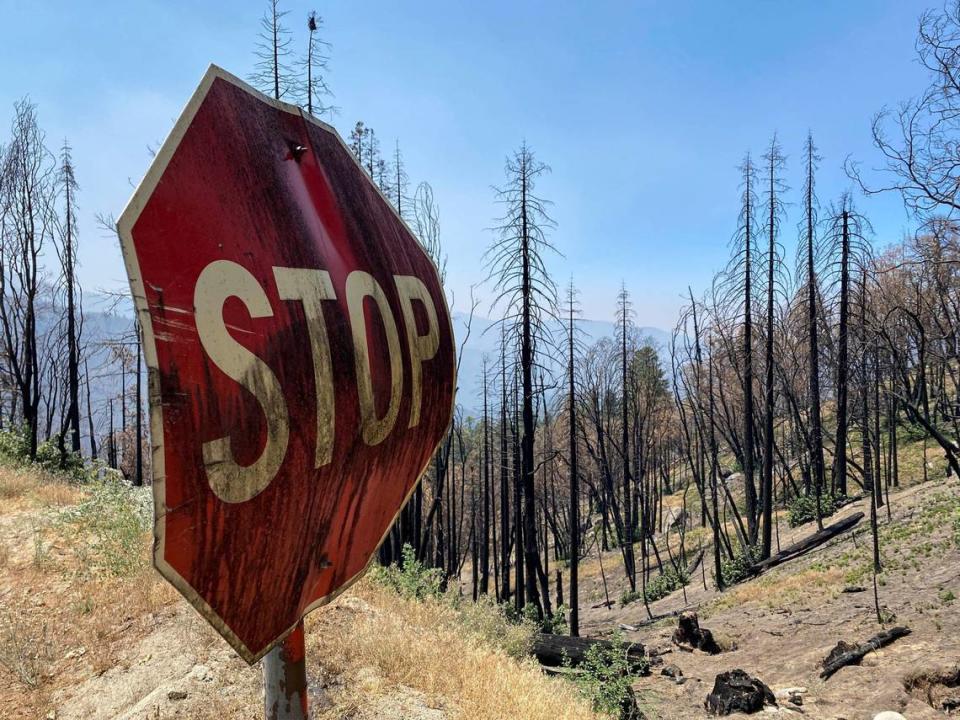
Even the fire-resistant Sequoias can be felled by bad fire.
Though there are signs that some redwoods are recovering from the devastating series of fires that swept California in the early 2020s, a tree that can live thousands of years can be demolished in a flash.
And California’s iconic state tree is not being replaced at the rate it is falling. Unfortunately, the forests around Sequoias are filled with trees that were weakened by drought or beetles and far less armored against fire.
Today there are efforts being made to responsibly help protect California from devastating wildfires.
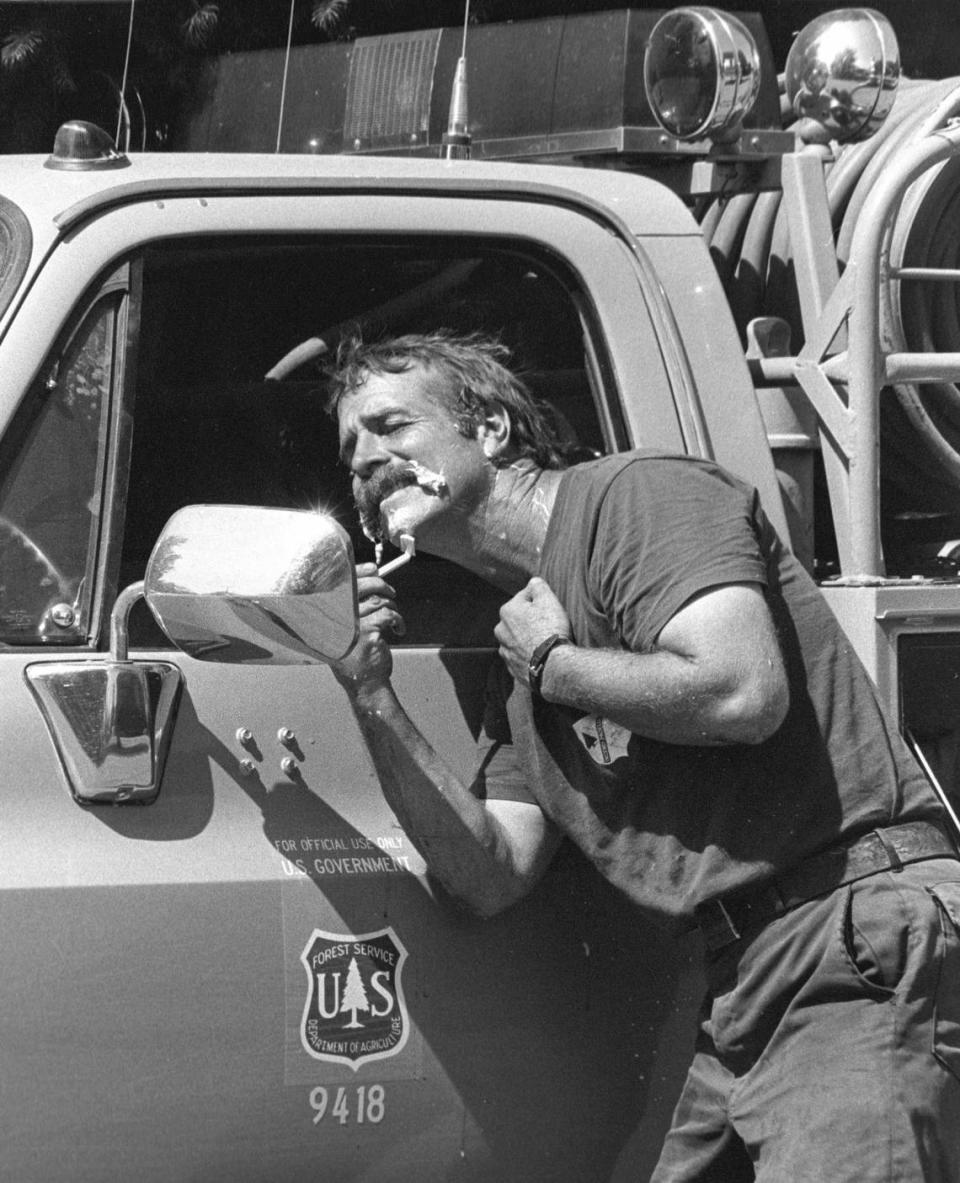
Recently the yak titʸu titʸu yak tiłhini Northern Chumash Tribe of San Luis Obispo Region and County partnered with local agencies to conduct the county’s first cultural burn. The fire covered 15 acres at the Johnson Ranch.
Kelsey Shaffer, a cultural burn practitioner with the ytt Tribe, explained that fire can be seen as an elemental life force.
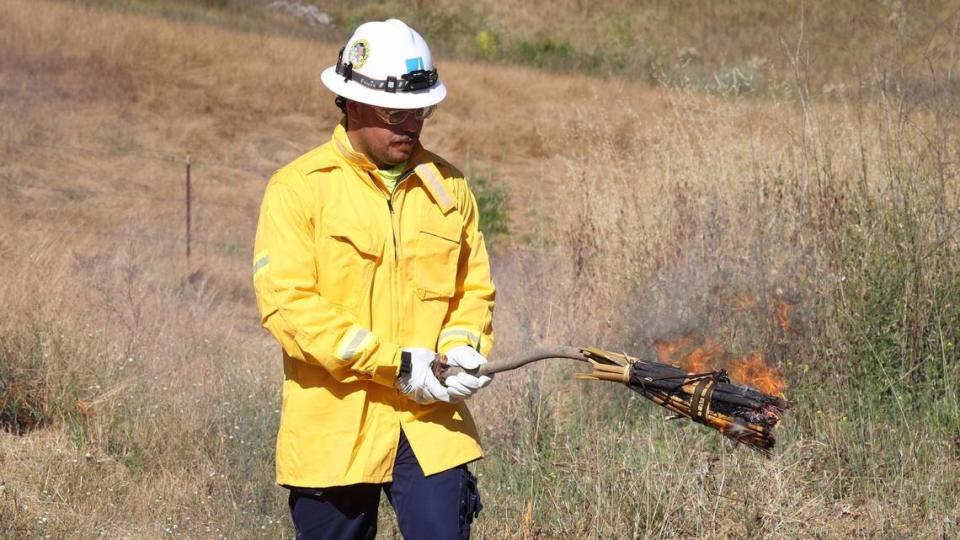
Though there have been previous agricultural- or agency-initiated controlled burns, this was the first of what the tribe and involved agencies hope will be an ongoing practice.
Nine decades ago, however, the priority was on putting out what was called the biggest fire in county history. At its height, the fire was active along a 20 mile front and was called the Rinconada-Lopez canyon fire.
Research and record keeping was not what it is today, and mapping is more accurate in the modern era, so the largest fire claim might be disputed, but it was on the front page for several days.
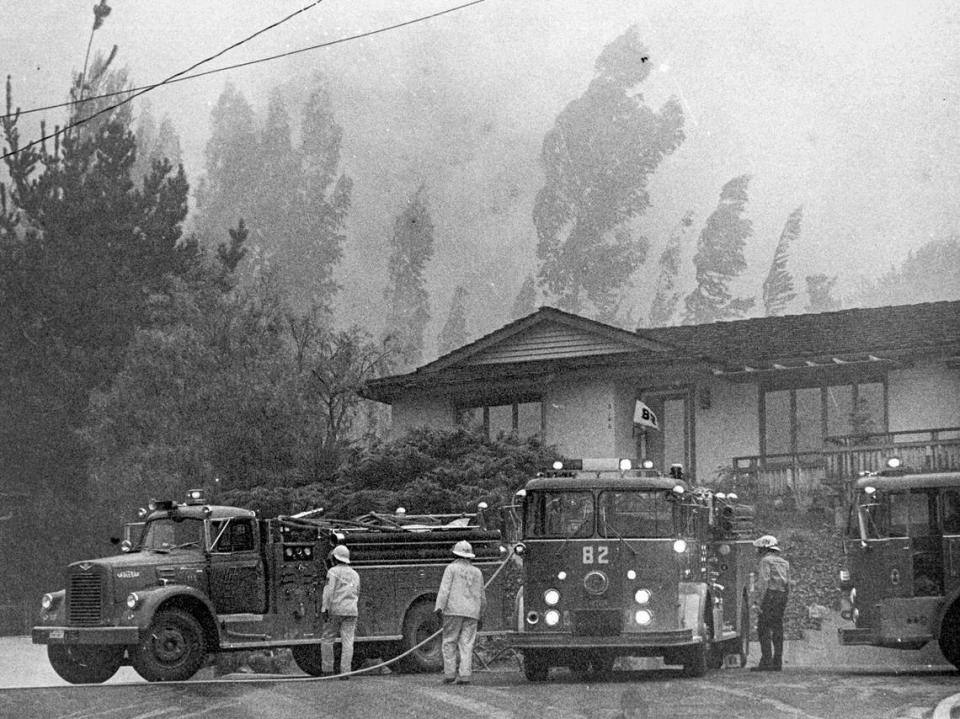
Even among modern fire totals for SLO County it would place high up, coming in at about third with 50,000 acres burned.
Meanwhile, the banner headline of Aug. 9, 1929, concerned rumblings of what would soon become a devastating stock market crash, ushering in the Great Depression. The fire was the second headline on the page for most days.
The most complete story ran Aug. 10, 1929 in the Daily Telegram:
Rinconada blaze nearly under control: Big fire is held in hills; Twenty mile blaze is stopped by fighters
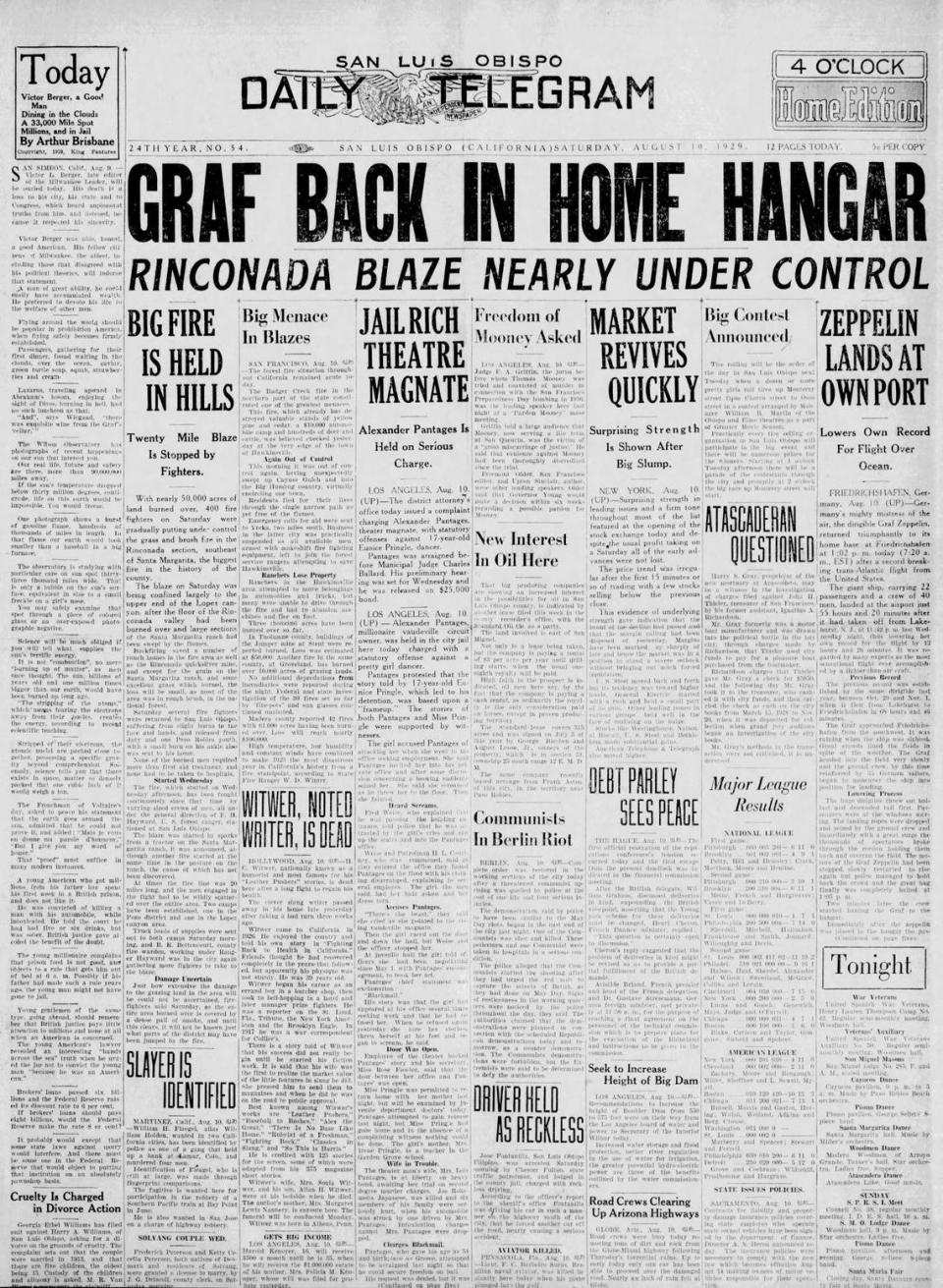
With nearly 50,000 acres of land burned over, 400 firefighters on Saturday were gradually putting under control the grass and brush fire in the Rinconada section, southeast of Santa Margarita, the biggest fire in the history of the county.
The blaze on Saturday was being confined largely to the upper end of the Lopez canyon, after the floor of the Rinconada valley had been burned over and large sections of the Santa Margarita ranch had been swept by the flames.
Backfiring saved a number of ranch homes in the fire area as well as the Rinconada quicksilver mine, and except for the grain on the Santa Margarita ranch, and some excellent grass which burned, the loss will be small as most of the area was in rough brush, in the national forest.
Saturday several firefighters were returned to San Luis Obispo, suffering from slight burns to the face and hands, and released from duty and one Paso Robles youth with a small burn on his ankle also was sent to his home. None of the burned men required more than first aid treatment, and none had to be taken to hospitals.
Started Wednesday
The fire which started on Wednesday afternoon, has been fought continuously since that time by varying sized crews of men, all under the general direction of F.H. Hayward, U.S. forest ranger, stationed at San Luis Obispo.
The blaze was stared by sparks from a tractor on the Santa Margarita Ranch. It was announced, although another fire started at the same time in the pasture on the ranch, the cause of which has not been discovered.
At times the fire line was 20 miles long, and the men engaged in the fight had to be wildly scattered over the entire area. Two camps have been established, one in the Pozo district and one in the Lopez canyon area.
Truck loads of supplies were sent out to both camps Saturday morning, and B.R. Bettencourt, county fire warden, working under Ranger Hayward was in the city again gathering more fighters to take to the blaze.
Damage Uncertain
Just how extensive the damage to the grazing land in the area will be could not be ascertained, firefighters said Saturday, as the entire area burned over is covered by a dense pall of smoke, and until this clears, it will not be known just what parts of the district may have been jumped by the fire.

